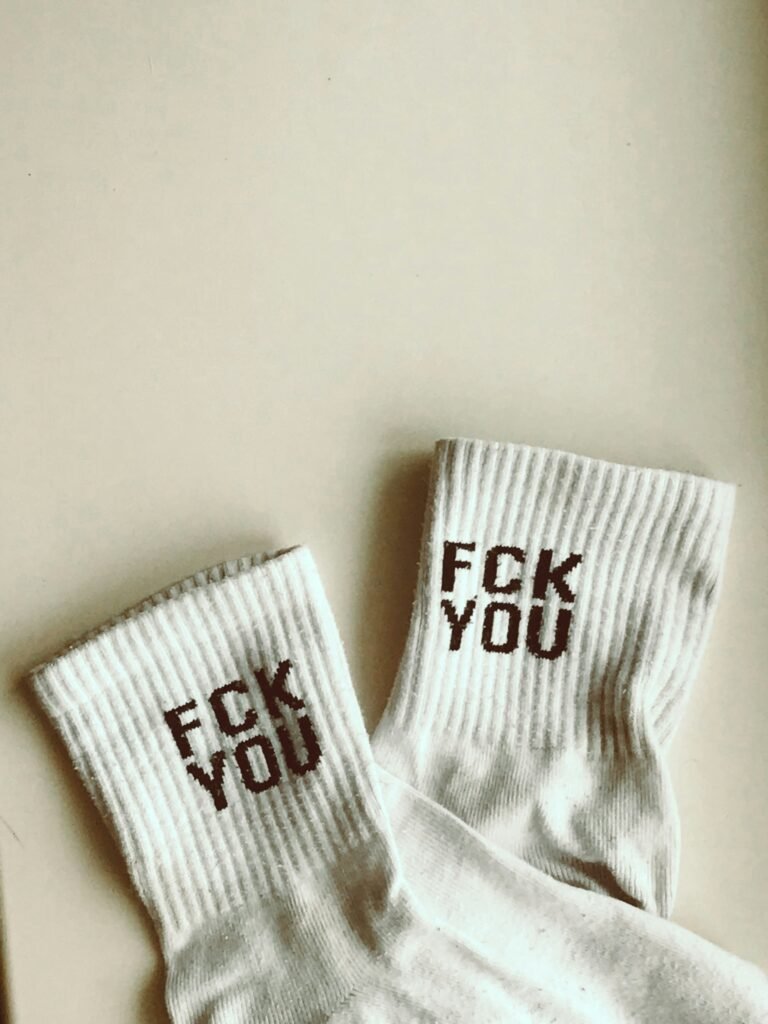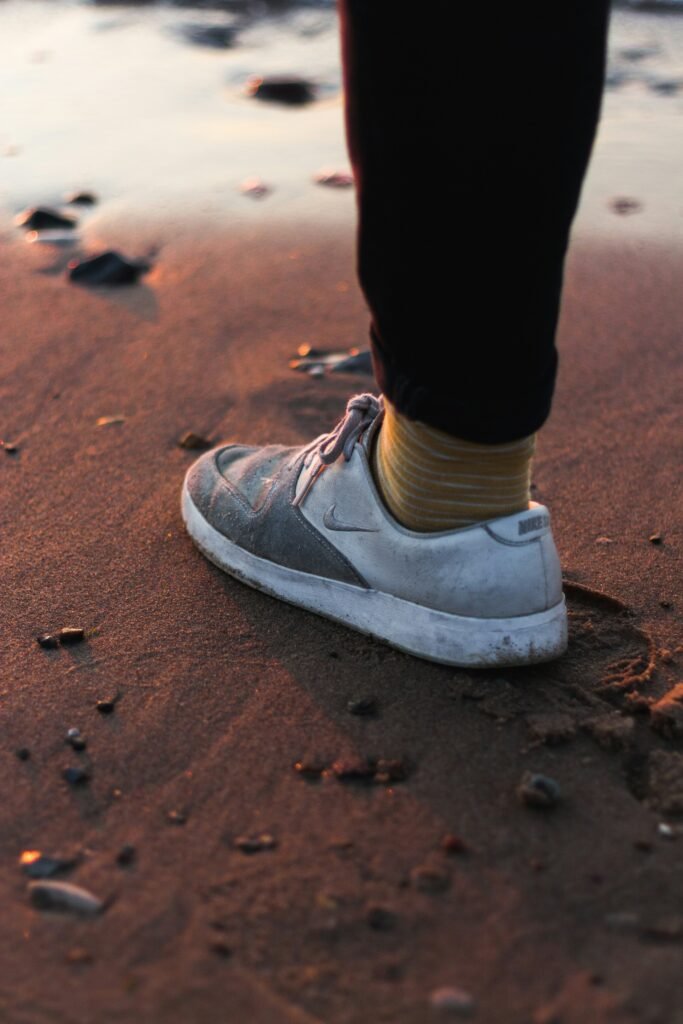Have you ever come across a pair of vintage designer socks that you absolutely adore, but they are starting to show signs of wear and tear? In this step-by-step tutorial, I will guide you through the process of restoring these treasured pieces to their former glory. So grab your favorite pair of designer socks and let’s get started!
Assessing the Damage
Before you embark on the journey of restoring your vintage designer socks, it is important to assess the extent of the damage. Take a close look at the socks and identify any holes, snags, or loose threads that may need attention. Once you have a clear understanding of the issues, you can proceed with the appropriate repair techniques.
Checking for Holes
Start by carefully examining the socks for any holes that may have developed over time. Look for areas where the fabric is worn thin or where there are visible tears. Make a note of the location and size of each hole, as this will guide you in the repair process later on.
Inspecting for Snags
Next, inspect the socks for any snags or pulled threads that may be detracting from their overall appearance. Gently run your fingers over the fabric to feel for any rough or raised areas. Take note of these snags so that you can address them during the restoration process.
Gathering Your Supplies
Once you have identified the areas that require attention, it’s time to gather the necessary supplies for restoring your vintage designer socks. Here are some essential items that you may need:
| Supplies | Description |
|---|---|
| Matching Thread | Choose a thread that closely matches the color of your socks. |
| Sewing Needles | Make sure you have a variety of needle sizes for different repairs. |
| Scissors | Sharp scissors are essential for cutting thread and fabric. |
| Seam Ripper | This tool will come in handy for carefully removing stitches. |
| Fabric Glue | Opt for a fabric glue that is suitable for knit fabrics. |
Tips for Choosing Supplies
- When selecting matching thread, it’s important to choose a high-quality thread that is durable and blends seamlessly with the fabric of your socks.
- Make sure to have a variety of sewing needles on hand, as different repairs may require different needle sizes.
- When purchasing fabric glue, look for a product that is specifically designed for repairing knit fabrics to ensure a strong and lasting bond.

This image is property of images.unsplash.com.
Repairing Holes
One of the most common issues that vintage designer socks face is the development of holes in the fabric. Fortunately, repairing holes is a relatively straightforward process that can be done with a few simple techniques.
Patching Holes
To patch a hole in your vintage designer socks, start by trimming any loose threads or frayed edges around the hole. Cut a small piece of matching fabric from an inconspicuous area of the socks, such as the cuff or toe, to use as a patch.
Next, apply a small amount of fabric glue to the edges of the hole and press the patch firmly into place. Allow the glue to dry completely before wearing the socks again. For added reinforcement, you can also sew around the edges of the patch using a matching thread and needle.
Darning Holes
Darning is another effective technique for repairing holes in knit fabrics such as designer socks. To darn a hole, start by threading a needle with matching thread and knotting the end. Begin stitching around the edges of the hole in a zigzag pattern, working your way across the entire damaged area.
Once you have completed the zigzag stitching, repeat the process in the opposite direction to create a sturdy woven repair. Trim any excess thread and gently stretch the fabric to ensure that the darned area blends seamlessly with the rest of the sock.
Fixing Snags
Snags are a common issue that can detract from the overall appearance of your vintage designer socks. Fortunately, there are several techniques you can use to fix snags and restore the smooth surface of the fabric.
Trim Loose Threads
Start by examining the snagged area and identifying any loose threads that may be causing the snag. Carefully trim these threads with sharp scissors, taking care not to cut the surrounding fabric. By removing the loose threads, you can prevent the snag from getting worse and improve the overall appearance of the socks.
Using a Seam Ripper
If the snag is caused by a pulled thread that is caught on a neighboring stitch, you can use a seam ripper to carefully release the tension. Gently guide the seam ripper under the snagged thread and carefully cut the stitch that is holding it in place. Be sure to work slowly and methodically to avoid damaging the surrounding fabric.
Securing Snags with Fabric Glue
For more stubborn snags that cannot be easily trimmed or removed, you can use fabric glue to secure the loose threads in place. Apply a small amount of fabric glue to the snagged area and press the threads down flat against the fabric. Allow the glue to dry completely before wearing the socks to ensure a secure bond.

This image is property of images.unsplash.com.
Strengthening Seams
Over time, the seams of your vintage designer socks may start to weaken or come apart, leading to fraying and unraveling. Strengthening the seams is essential for prolonging the lifespan of your socks and preventing further damage.
Reinforcing Seams with Extra Stitching
To reinforce the seams of your vintage designer socks, start by examining the areas where the fabric is beginning to fray or come undone. Thread a needle with matching thread and sew along the existing seam, creating a second line of stitching to provide added reinforcement.
Be sure to backstitch at the beginning and end of each seam to secure the thread in place. By adding extra stitching to the seams, you can prevent further unraveling and extend the life of your socks.
Repairing Open Seams
If the seams of your vintage designer socks have come completely apart, you can repair them using a technique known as ladder stitching. Start by aligning the edges of the seam and threading a needle with matching thread.
Insert the needle through one side of the seam and bring it back up through the other side, creating a vertical stitch that resembles the rungs of a ladder. Continue stitching in this manner, pulling the thread tight to create a secure bond between the two fabric edges.
Washing and Caring for Restored Socks
Once you have completed the restoration process for your vintage designer socks, it’s important to take proper care of them to ensure their longevity. Here are some tips for washing and caring for your restored socks:
Hand Washing
To preserve the delicate fabrics of your vintage designer socks, it is best to hand wash them in lukewarm water with a gentle detergent. Avoid using harsh chemicals or hot water, as these can damage the fibers and cause the colors to fade.
Drying
After washing your vintage designer socks, gently squeeze out excess water and lay them flat to dry on a clean towel. Avoid wringing or stretching the socks, as this can distort the shape of the fabric. Allow the socks to air dry completely before wearing or storing them.
Storing
To prevent damage and prolong the life of your restored socks, it is important to store them properly when not in use. Choose a cool, dry location away from direct sunlight and moisture to keep the fabric in optimal condition. Avoid folding or creasing the socks, as this can lead to permanent wrinkles and damage over time.

This image is property of images.unsplash.com.
Conclusion
Restoring vintage designer socks is a rewarding process that allows you to breathe new life into cherished pieces. By following this step-by-step tutorial and using the techniques outlined above, you can repair holes, fix snags, strengthen seams, and care for your socks properly to ensure their longevity. So grab your supplies, put on your favorite pair of designer socks, and let the restoration begin!
